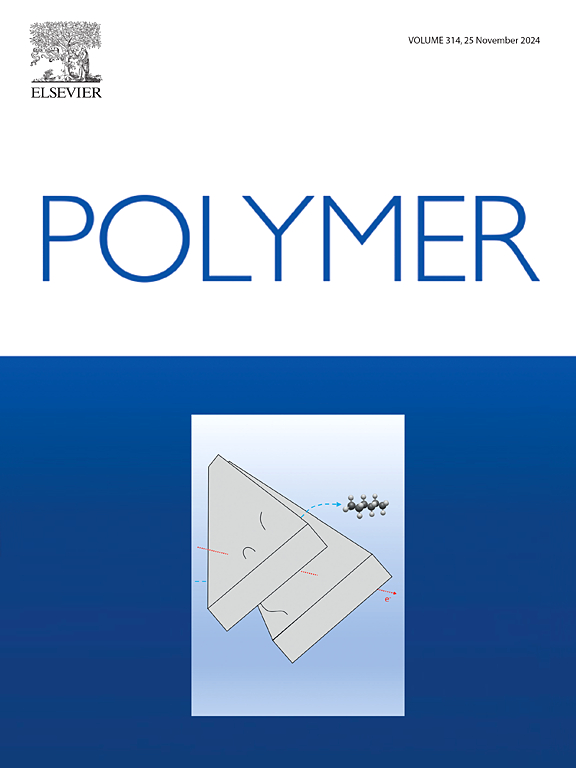热塑性涂料的前驱体系统具有极强的反应性,用于在线混合纤维生产
IF 4.1
2区 化学
Q2 POLYMER SCIENCE
引用次数: 0
摘要
在目前的情况下,热塑性玻璃纤维增强塑料(GFRP)的机械性能不足以用于高性能应用。这主要是由于玻璃纤维浸渍不完美,因此复合材料的微观结构不理想。为了克服这个问题,我们之前介绍了一种在纺丝过程中直接涂覆单个玻璃细丝的新方法(在线聚合)。虽然该工艺本身已经成功实施,但所使用的单体和各自的聚合物涂层都是模型系统,而不考虑涂层本身的材料特性。由于这方面显然对后期复合材料至关重要,因此我们在此讨论潜在的前驱体,这些前驱体可以产生合适的机械性能,并且仍然适合由工艺条件定义的狭窄框架。结果表明,几种高活性和机械上理想的丙烯酸单体可以很容易地共聚而没有明显的反应性损失。这些都被证明可以产生理想的软硬性能组合。另外,聚合物的机械性能可以通过掺入反应性低分子软树脂来调节。同样,前驱体的高活性特性被保留,并且获得了合适的材料性能。本文章由计算机程序翻译,如有差异,请以英文原文为准。


Thermoplastic coatings from precursor systems with extreme reactivity for in-line hybrid-fiber production
In the state of the art, thermoplastic glass fiber reinforced plastics (GFRP) suffer from mechanical properties insufficient for high-performance applications. This is primarily due to imperfect impregnation of the glass fibers and consequently a non-ideal microstructure of the composite. To overcome this issue, we previously introduced a novel approach for coating of individual glass filaments directly within the spinning process (in-line polymerization). While the process itself has been implemented successfully, the used monomers and respective polymeric coatings were model systems, without regard to the material properties of the coating itself. As this aspect is obviously of supreme importance for the later composite, we herein discuss potential precursors that result in suited mechanical properties and still fit into the narrow frame, defined by the process conditions. It is shown that several highly reactive and mechanically desirable acrylic monomers can be readily copolymerized without significant loss of reactivity. Those are shown to yield ideal combinations of hard and soft properties. Alternatively, mechanical properties of the polymer can be adjusted by incorporation of reactive low molecular soft resins. Again, the highly reactive character of the precursor is retained and suitable material properties are obtained.
求助全文
通过发布文献求助,成功后即可免费获取论文全文。
去求助
来源期刊

Polymer
化学-高分子科学
CiteScore
7.90
自引率
8.70%
发文量
959
审稿时长
32 days
期刊介绍:
Polymer is an interdisciplinary journal dedicated to publishing innovative and significant advances in Polymer Physics, Chemistry and Technology. We welcome submissions on polymer hybrids, nanocomposites, characterisation and self-assembly. Polymer also publishes work on the technological application of polymers in energy and optoelectronics.
The main scope is covered but not limited to the following core areas:
Polymer Materials
Nanocomposites and hybrid nanomaterials
Polymer blends, films, fibres, networks and porous materials
Physical Characterization
Characterisation, modelling and simulation* of molecular and materials properties in bulk, solution, and thin films
Polymer Engineering
Advanced multiscale processing methods
Polymer Synthesis, Modification and Self-assembly
Including designer polymer architectures, mechanisms and kinetics, and supramolecular polymerization
Technological Applications
Polymers for energy generation and storage
Polymer membranes for separation technology
Polymers for opto- and microelectronics.
 求助内容:
求助内容: 应助结果提醒方式:
应助结果提醒方式:


